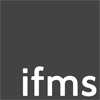Molecular System Designs: The Future of Newsroom Configurations
It is incredibly thrilling to witness a newsroom being reorganised to meet the demands of digital publishing imperatives, with desks rearranged into a coherent plan that enable and optimise digital workflows and communication.
However, when we observe these polished and bright newsrooms, our true focus should be on their potential appearance three or five years down the line.
The one central truth about digital publishing is that rapidly changing technology means the newsroom is perpetually evolving in many ways: workflows, storytelling, platforms, skills, communication, and more. This applies significant pressure on the entire organisation, and also on the architecture and design of the newsroom.
New iterations of technology, platforms, storytelling techniques, and communication needs develop swiftly but are often hindered by inflexible newsroom layouts. Newsroom layouts can lag behind these developments because reconfiguring the layout can be costly, especially if the architects haven’t planned ahead to future-proof the newsroom.
Flexibility is the key. This entails issues such as working around existing physical structures like columns and posts, creating dropped ceilings and raised floors to manage the miles of wiring that may eventually need to be realigned, and designing quiet meeting spaces amidst the open plan newsrooms where staff can meet face-to-face away from their desks or in spaces to produce audio and video.
It also implies contemplating the emerging issues, even those we cannot yet anticipate, and designing the current newsroom to be altered efficiently and at a low cost.
We can perceive the significance of this from the way newsrooms have transformed over the past decade or even over the past 10 years: This started with newsroom 1.0, where everything revolved around print, which dictated editorial workflows and where digital might have been placed in a small corner of the newsroom or even in another building.
It evolved to newer configurations where mobile platforms drove 24/7 news processes and print became one part of the platform instead of the editorial centre. Recent iterations increasingly focus on data analysts, developers, and even marketers as they rise in importance and are being positioned amongst the journalistic roles.
Those relationships continue to change and thus the modern newsroom evolves with them.
There are numerous ways to tackle this, as newsrooms come in all shapes and sizes. One approach is to develop desk configurations that deviate from the traditional linear designs, where banks of desks are arranged around a central hub.
For many years, we have collaborated with Iztok Lemajic of the Slovenia-based architecture and design firm Innovative Design for Living. Together, we’ve worked in a number of newsrooms in India, Austria, New Zealand, Slovakia, the United States, and elsewhere to develop customised newsroom configurations that work in the present and also anticipate future needs.
We call it a molecular system, as the configuration somewhat resembles a molecular chain (imagine desks that can be “snaked” around objects that would impede more rigid configurations). Rather than desks configured linearly, three-desk modules are arranged in a triangular configuration, which are connected to similar modules (as many as needed) around a central, decision-making hub.
Unlike the more common layout, where desks are placed in long, linear benches (or “laying batteries,” as they are sometimes called by fellow journalists), each of these three-desk modules can rotate, altering the angles between them and those connecting to them, enabling movement and reconfiguration as needed.
The issue with newsroom space is you always have some columns and other obstacles that interfere and make it challenging to place rigid structures, such as lines or square configurations. Creating newsroom layouts is akin to solving a puzzle, and these triangular modules are one solution, as they can rotate to fit all the spaces and provide a cogent layout that isn’t dictated by physical limitations.
Newsroom spaces differ greatly, and these configurations can be adapted to each of them. So, for example, the molecular system is suitable for large newsrooms, where hundreds of reporters and editors must be accommodated and where one might find three or more different news brands sharing one space.
It also functions well in smaller newsrooms, where the same physical obstacles persist that previously would have dictated desks were arranged in a less-than-ideal configuration. In both instances, the layout creates a space where communication flows rapidly and directly.
Whatever the configuration, newsrooms need to be flexible enough to be tailored to the future — one that encompasses considerations including the right size, technology, setup, and positioning so it fits the purpose and is flexible.
